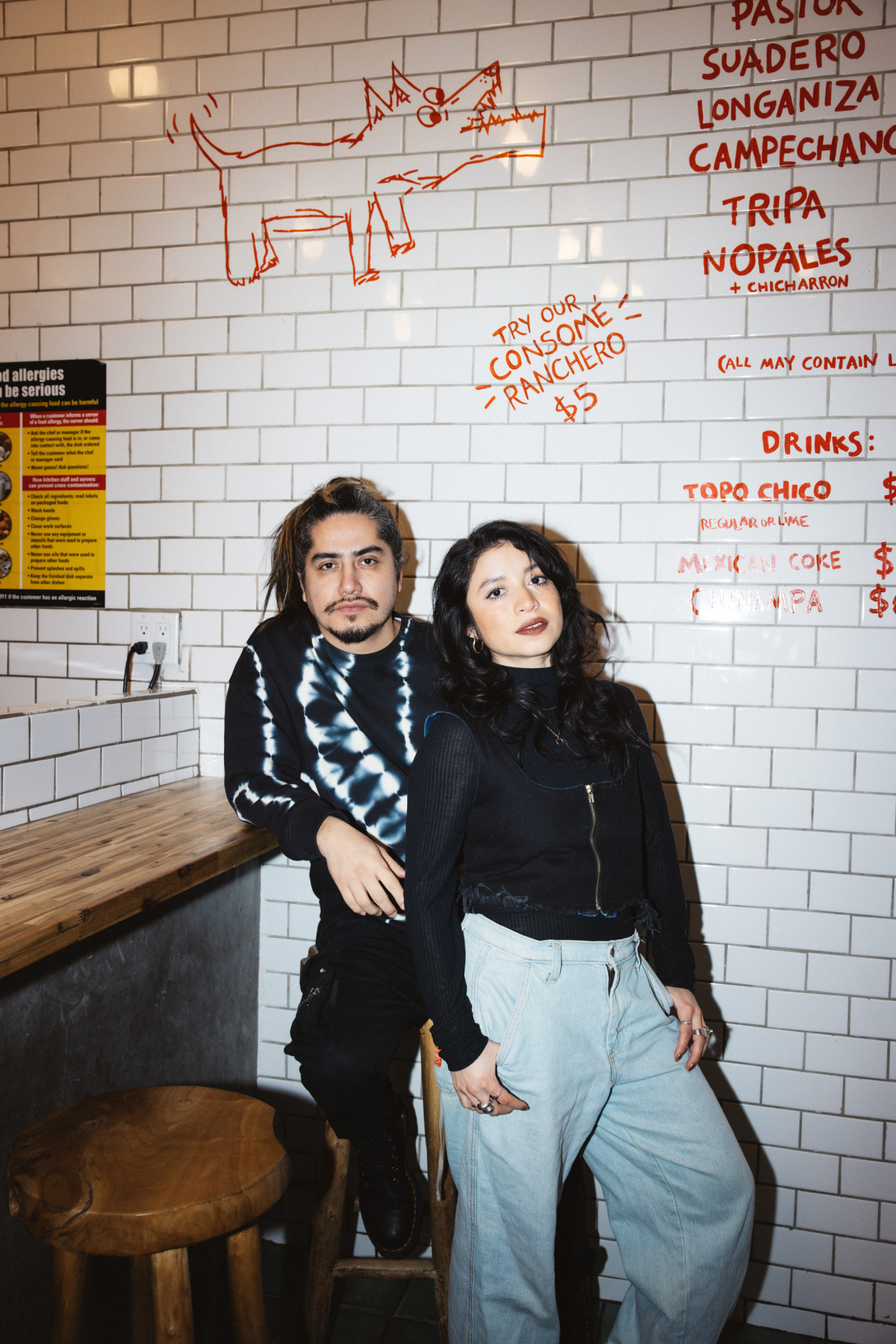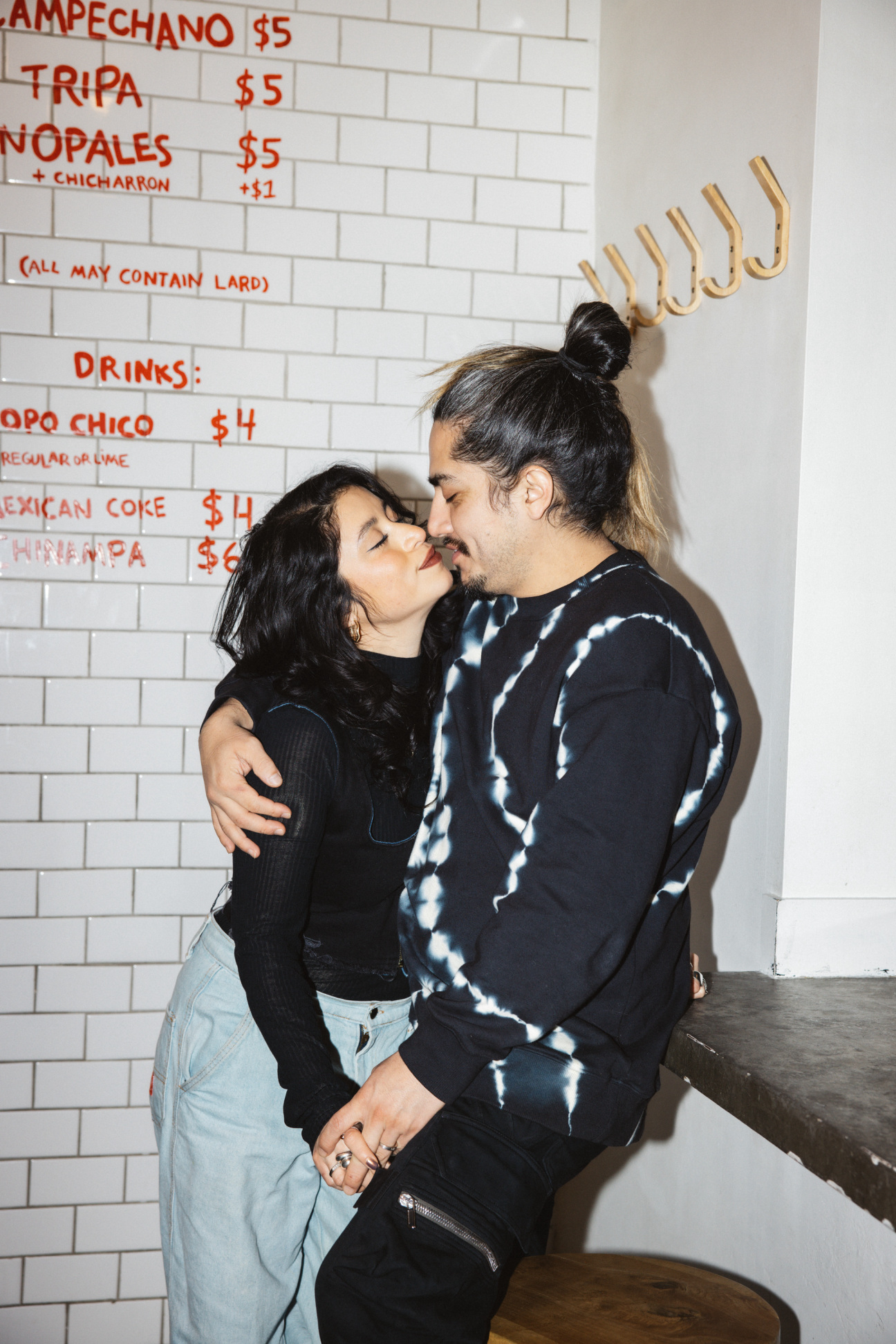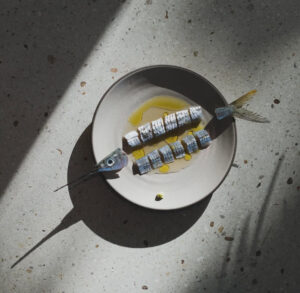
In a city where culinary trends come and go, Giovanni Cervantes and Tania Apolinar have tapped into something timeless: the allure of an authentic Mexican taco. What began as a pandemic-induced experiment has blossomed into two thriving establishments: Taqueria Ramírez in Greenpoint, Brooklyn, and their newest venture, Carnitas Ramírez, a carnitas-focused restaurant in the East Village.
The duo's journey is a testament to adaptability and passion. When their work as professional photographers slowed during lockdown, they seized the opportunity for a career change, pursuing Cervantes's long-held dream of opening a taqueria. Embracing the DIY spirit of the digital age, Cervantes turned to Youtube, where he learned to cook Taqueria Ramírez’s entire menu.
Drawing inspiration from the spirited street food culture of Mexico City and the fast-casual dining concepts of New York, Cervantes and Apolinar have crafted spaces that marry accessibility with authenticity. (They playfully insist that customers use Spanish terms when ordering—you won't be asking for pork shoulder, but "maciza.") On any weekend evening, revelers can be spotted spilling out the front door of their Greenpoint or East Village storefronts and onto the sidewalk. CULTURED touched base with the duo about the power of simplicity, the parallels between photography and hospitality, and the other restaurants on their hit list.

What's in your system? What have you had to eat and drink today so far?
Tania Apolinar: Oh, damn. I had a coffee in the morning, and I had one taco de suadero and one taco campechano. That's it.
Giovanni Cervantes: I also did a coffee. I've been drinking decaf for over a year. My first solid food is usually in the afternoon, like 12:30 p.m. I also stopped by the Taqueria earlier and got one campechano and one suadero.
You opened your second location, Carnitas Ramírez, last month and sold out the first weekend. How does it feel?
Cervantes: I'm very happy to be able to see the light after working for almost a year in the space. We definitely learned from our first experience in Greenpoint. This build-out was way more intense, but also much more in control. It feels really good to fill the space with people, to see recognizable faces, like our Greenpoint faces, coming here to support. It also felt pretty good looking at all the Mexican families coming in this past weekend. We serve everybody but when you see these families who are planning their day to come and have this food… It just feels really nice.

Taqueria Ramírez famously opened right after the pandemic, after the photography studio you two worked at shut down. Photo-to-taco is not everyone's pipeline, but it became yours. I'm wondering, a few years out, how you see that initial decision.
Cervantes: We still have a lot of friends in that industry. A really good friend, his name is Ricardo, was telling us that he thinks that by 2028, photography is going to be over. Even if that doesn’t happen, I was still ready to do something different. I was always having this type of conversation: “I would love to have a taqueria one day.” I feel good looking back at the past and seeing where we are right now.
Apolinar: The pandemic made everybody think outside the box, to see how you could change your life. I had been doing photography since I was 17 or 16. We synchronized at that moment, and we have been working well together since—that's how we met, working together, so everything just made sense.
Are there any similarities between your photo practices and running a restaurant?
Apolinar: The social part of having to connect with people. You have to communicate and create something together. And, I mean, the long hours…
Cervantes: Definitely the long hours. Or early call times. Shit like that. The only thing that is not the same is, when you work in photography, the catering service is not the best; you always have these bagels with cream cheese. Here, we have really good food all the time.

Gio, you wanted to open a taqueria for a while, but there's obviously a learning curve that comes with the restaurant industry, especially in New York. What were the references or experiences that got you on the right path?
Cervantes: My years growing up in Mexico City: the format of taquerias down there and the interactions with the staff and the customers—talking or making jokes. That has always been my dream to mimic.
In terms of New York, we knew that we wanted to have this fast-casual concept from the very beginning. Before the pandemic, there was this pasta place that we used to go to a lot—also in Greenpoint—called Forma Pasta. That was the first time that I saw this fast-casual format that still had some elements of design. We always knew we wanted to have an open kitchen. That also comes from almost all taquerias from Mexico—it's very rare that there's a back kitchen.
Apolinar: I totally remember the conversations about Forma. Just sitting down, observing the flow, and being like, “This is a good formula for success.” It's a good price. It's also not a crazy long menu that you spend so much time thinking, Oh, what should I get?
What has surprised you the most about this journey?
Apolinar: All the bureaucracy is crazy. Sometimes it feels like New York doesn't want [to support small] business owners—you wish there was more help. Everybody goes through it, but it was a surprise for me.

What made you want to focus on carnitas for the second restaurant?
Cervantes: In Greenpoint, we only have six taco choices. They're all very different, but this idea became even more specific. That's also the way I saw it in Mexico. These family businesses just do carnitas their whole lives, and they get really, really good at it, obviously. It takes a lot of work because these are long cooking processes. For the first batch, we need to get here at 6 a.m. I love that ritualistic aspect of cooking, and being very perfectionist in just focusing on one thing.
Greenpoint has been such a success—there are lines upon lines every single time I pass by the taqueria. What was it like expanding to Manhattan?
Apolinar: We knew we wanted a situation similar to Greenpoint—not being in a crazy busy street, but something in between, where you feel that neighborhood’s vibe. When we saw this space, we knew we wanted to be in this area of Manhattan.
What is it you want to see more and less of in the restaurant world in New York?
Cervantes: I'd love to get to know spaces that are very focused on one thing. In terms of Mexican food, the things that are opening right now are much better than they used to be 10 years ago. Mexicans are feeling more encouraged to do it the real way and not trying to please anybody’s taste.

Where are you most excited to be eating in New York right now?
Apolinar: Our friend Gerald has a place called Mắm in Chinatown, and he's doing really nice Vietnamese food. It's an experience—you sit in the street and it's really lovely. I wanna go more and get to know their new menu.
Cervantes: I wanna try—tu sabes—the place in [Brooklyn].
Apolinar: Oh yeah, there's this other Mexican restaurant—I saw a video of them doing carnitas like us, in a big pot, the whole pig and all, so we wanna check that out soon. It's called Taqueria Milear.
And what's the dish that you feel represents where each of you is at in your life right now?
Cervantes: A Mexican dish called chiles en nogada, which is coming in September—our Independence Month. It's basically a poblano pepper filled with meat and a bunch of other things. It's made with a white salsa made out of some tree nuts, and I don't know what else. I would love to be that.
Apolinar: For me, I think that it is aguachile. It's something I can eat almost every day. It's simple. It's healthy. It's refreshing.










 in your life?
in your life?

